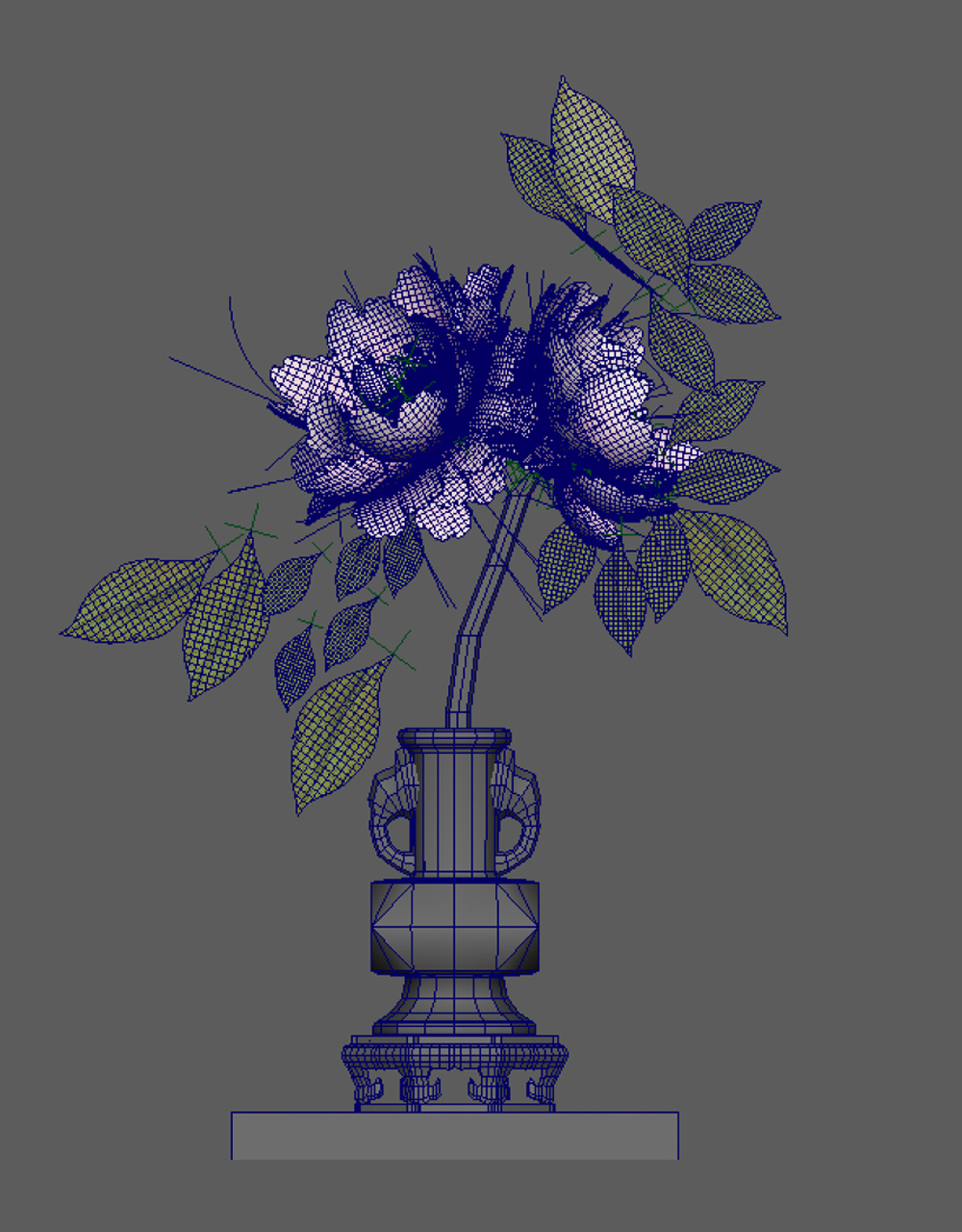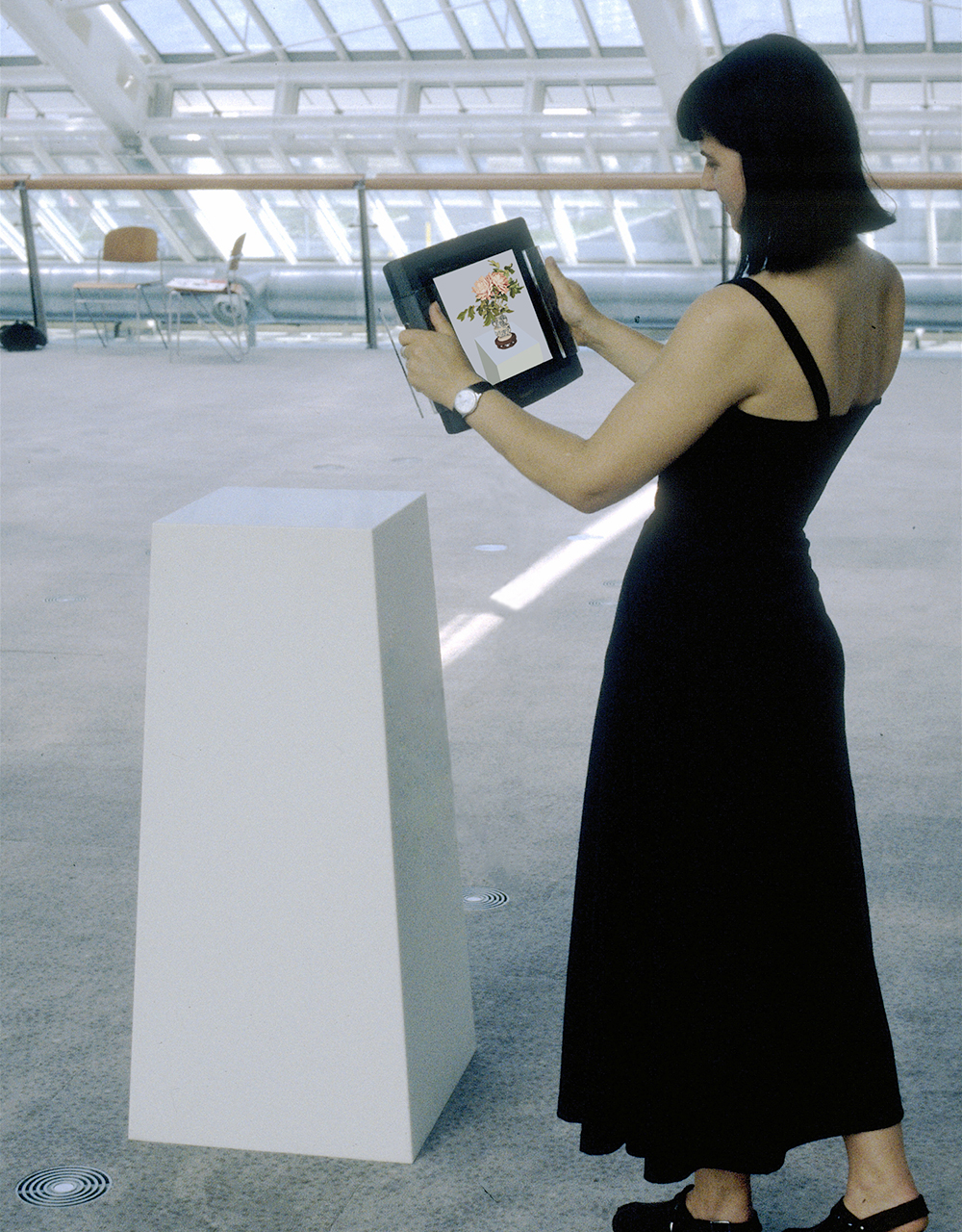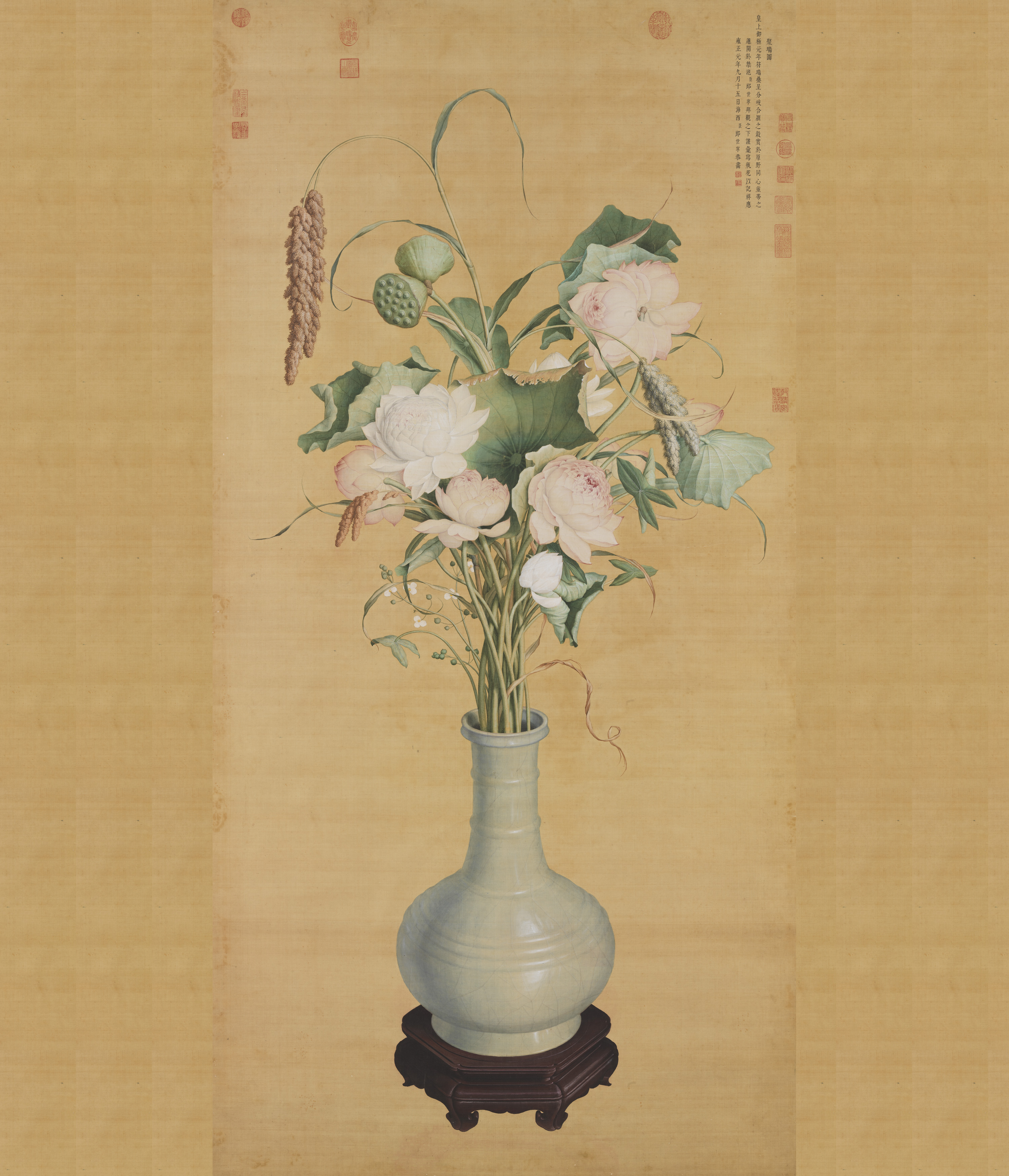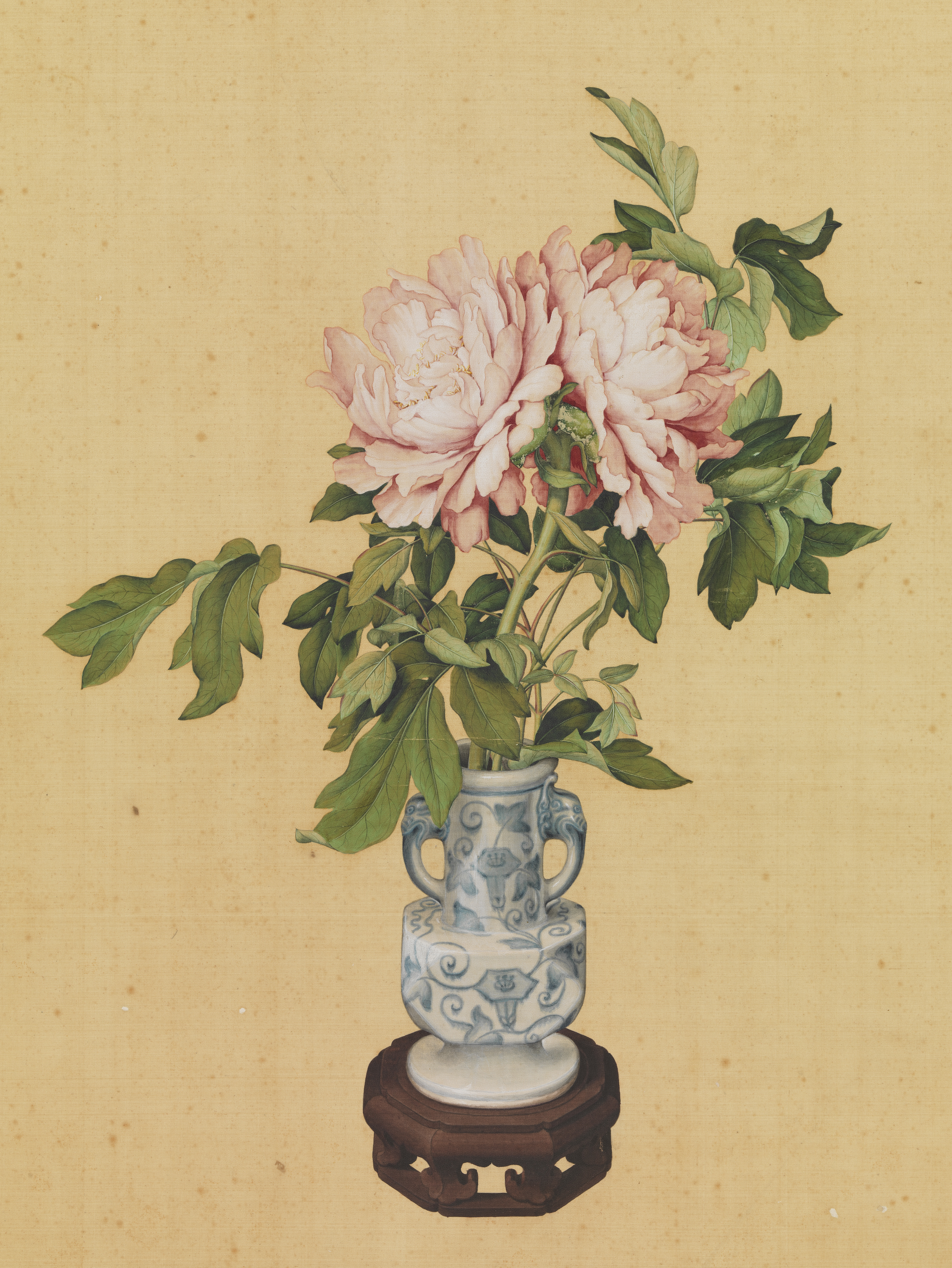Castiglione's virtual flowers(City University of Hong Kong)
- Concept: Jeffrey Shaw
- Application: Leith Chan and associates
This "augmented reality" installation, conceived by Professor Jeffrey Shaw in the spirit of his pioneering 1995 artwork The Golden Calf, brings to life Castiglione still-life masterpieces Gathering of Auspicious Sings and Vase of Flowers as virtual 3D illusions. Viewers use a digital tablet to discover the virtual vases and their flowers, which appear like 3D holograms on top of two pedestals.


Original work of art
Gathering of Auspicious Signs
- Lang Shining (Giuseppe Castiglione, 1688-1766), Qing dynasty
- Hanging scroll, ink and colors on silk, 173 x 86.1 cm
n this painting is a celadon vase with an arrangement of auspicious plants such as dual-blossom lotuses and stalks of rice with two ears of grain, plants that have been used in painting since the Song and Yuan dynasties to symbolize sagacious rule. Giuseppe Castiglione signed his name in Chinese with the "Song-script" style of Qing court publications and included a date equivalent to 1723, the first year of the Yongzheng emperor's reign, making it his earliest dated work. An elevated point of view has been taken, allowing the viewer to peer into the neck of the vessel. Castiglione also used white pigment to highlight the shine on the glaze, enhancing the volumetric effect of this porcelain vase. As for the plants, Castiglione excelled at rendering gradated areas of color to express three-dimensionality and shading with a single source of light. The coloring overall is exceptionally refined, making the motifs appear as if radiating with brightness. The painting is a masterful example of how Castiglione translated Chinese subject matter using Western techniques. The vase shown here also appears similar to an imitation Ru-ware celadon with linear patterns in the collection of the National Palace Museum.

Vase of Flowers
- Lang Shining (Giuseppe Castiglione, 1688-1766), Qing dynasty
- Hanging scroll, ink and colors on silk, 113.4 x 59.5 cm
The Italian missionary-artist Giuseppe Castiglione (Chinese name: Lang Shining) arrived in China in 1715 to do missionary work and was summoned to the court, where he came to serve in the Painting Academy. He brought the realistic techniques of European oil painting and one-point perspective with him to the court. Castiglione excelled at bird-and-flower subjects "sketched from life" and was especially renowned for his depictions of horses.
Giuseppe Castiglione fused traditional Chinese painting methods with Western techniques of perspective. Here he painted peonies with light and dark hues to express a sense of layering and volume. The leaves also turn and extend in space, the veins outlined with great realism to create an extremely rich and volumetric effect. The angular blue-and-white vase shown here is decorated with a morning glory pattern and features two dragon-head handles. Strong lighting emphasizes the shine and luster of the porcelain, the colors having a dramatic chiaroscuro effect of light and shade. Placed in the vase is a rare double-blossom branch of peonies, symbolizing auspicious fortune as well as peace and wealth.
